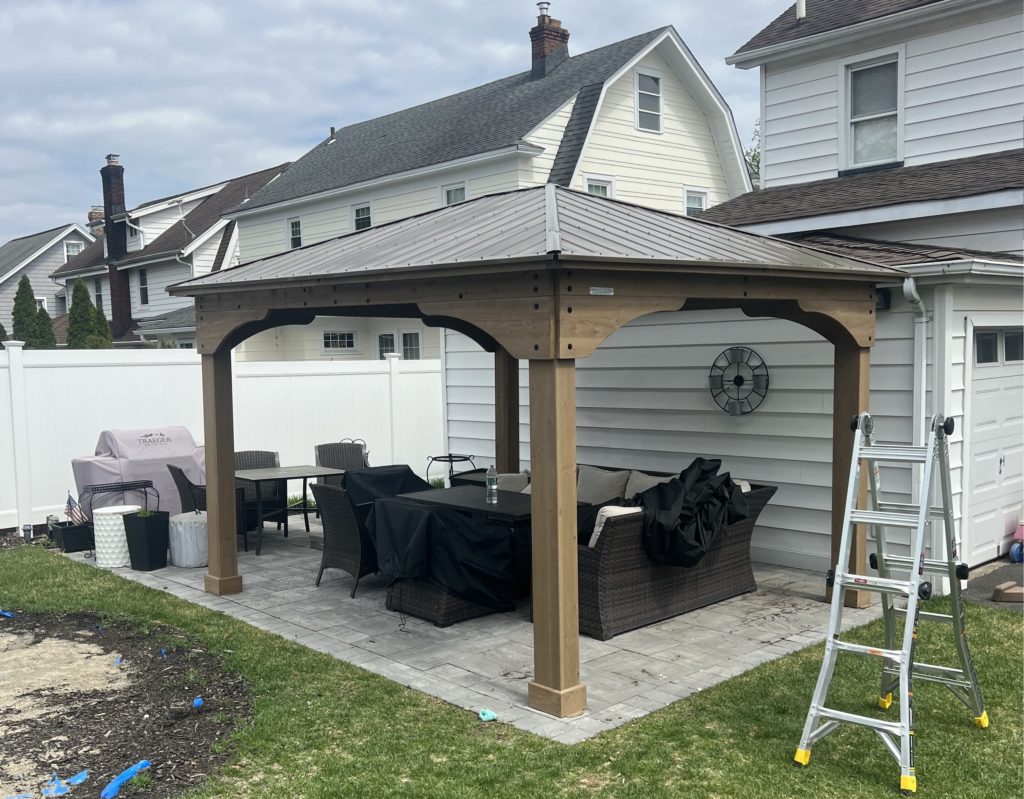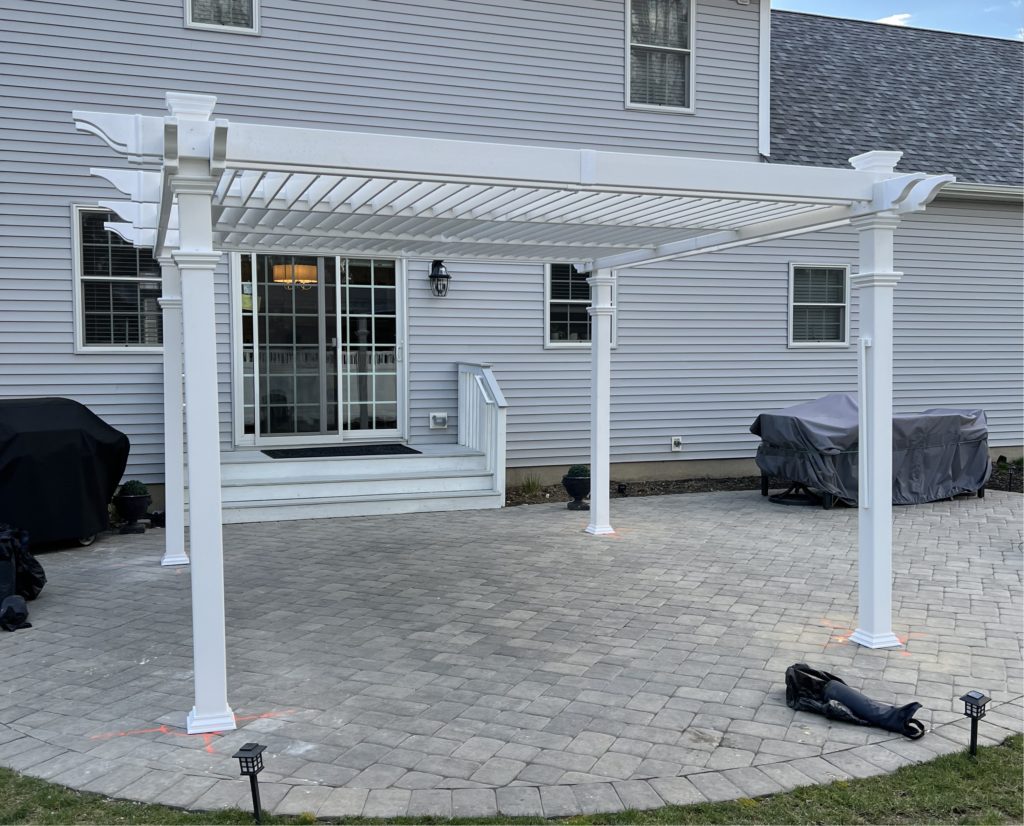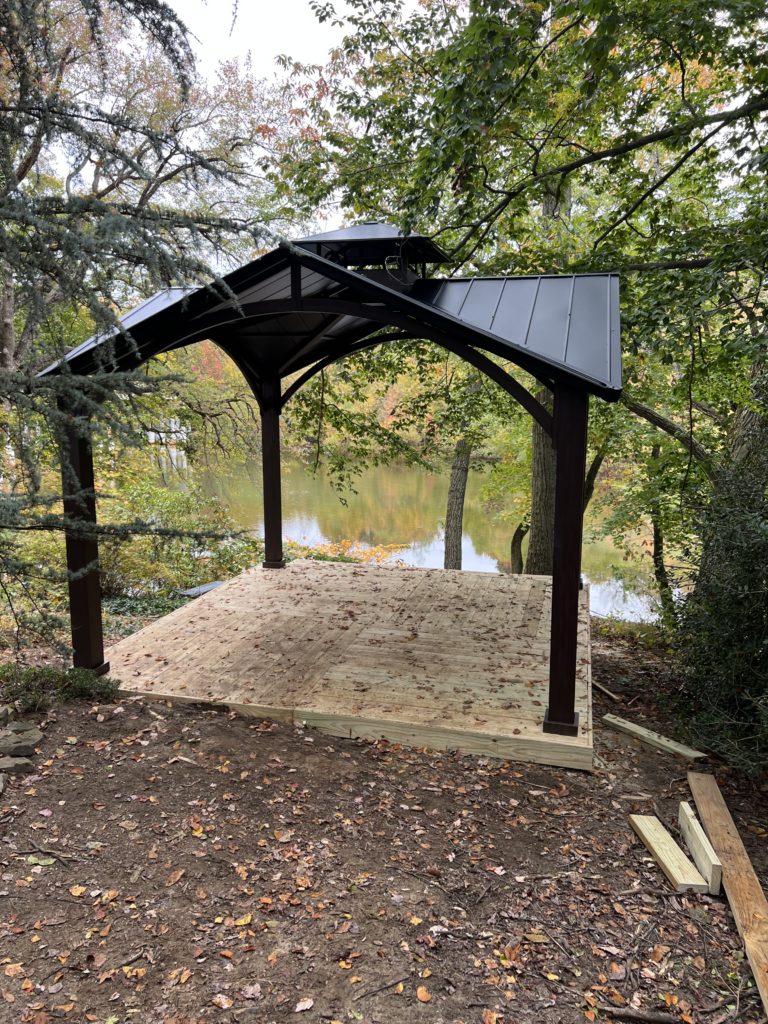Are you looking to enhance the airflow and comfort in your home or office? Look no further than professional ceiling fan installation, replacement and repair services in Metuchen, NJ. Ceiling fans are not just a stylish addition to any space but also offer several practical benefits.
OUR CONTACT
Email Support:
info@gazebo-installation.com
Ask your question:
info@gazebo-installation.com
Some of Our Portfolio Gazebo and Pergola Assembly Projects



Installing a ceiling fan can help create a more comfortable environment by circulating the air and providing a gentle breeze. This can be particularly useful during hot summer months when air conditioning might not be enough to keep a room cool. Additionally, ceiling fans can help distribute heat during the winter months, making your space more energy-efficient.
Whether you are interested in installing a new ceiling fan, replacing an old one, or need repairs for an existing fan, it is crucial to hire a professional electrician. DIY installation or repair attempts can not only be time-consuming but also potentially dangerous. A licensed electrician in Metuchen, NJ, can ensure a safe and efficient installation or repair process, meeting all electrical safety codes and regulations.
So, if you want to improve the airflow and comfort in your space, consider hiring professional ceiling fan installation, replacement, and repair services in Metuchen, NJ. With the expertise of a licensed electrician, you can enjoy the benefits of a well-functioning ceiling fan and ensure the longevity of your investment. Contact a trusted electrician today to schedule an appointment!
Ceiling Fan Installation in Metuchen NJ: Expert Tips and Guidelines
Installing a ceiling fan in your home in Metuchen, NJ can bring numerous benefits, such as better air circulation, improved energy efficiency, and enhanced aesthetic appeal. However, to ensure a successful installation, it is important to follow expert tips and guidelines. Here are some key points to keep in mind:
1. Choose the right fan: Before starting the installation process, ensure that you have selected the right ceiling fan for your space. Consider factors such as the fan’s size, style, and functionality based on your room’s needs and your personal preferences.
2. Turn off power: Before beginning any electrical work, always remember to turn off the power to the room or area where the ceiling fan installation will take place. This step is crucial to ensure your safety and prevent any electrical mishaps during the process.
- 3. Gather the necessary tools: Make sure you have all the essential tools required for the installation, including a ladder, screwdriver, wire stripper, pliers, and electrical tape. Having the right tools handy will make the installation process smoother.
- 4. Follow the manufacturer’s instructions: Each ceiling fan brand and model may have specific installation instructions. It is important to carefully read and follow the manufacturer’s guidelines to ensure correct assembly and safe installation.
- 5. Secure the mounting bracket: Properly attach the mounting bracket to the ceiling using screws and ensure it is securely fastened. This step is crucial as the mounting bracket provides the necessary support for the fan.
- 6. Connect the wiring: Follow the wiring instructions provided by the manufacturer to connect the fan’s wiring to the electrical box, ensuring proper insulation and secure connections. Avoid using old or damaged wires.
- 7. Test the fan: Once the installation is complete, test the fan to ensure it is functioning properly. Check the fan’s speed settings, direction, and any additional features to verify that everything is in working order.
Remember, if you are unsure about any step of the ceiling fan installation process, it is always recommended to seek professional assistance. Hiring an experienced electrician or ceiling fan installer can ensure a successful and safe installation that meets all necessary guidelines and regulations in Metuchen, NJ.
Why Hiring a Professional is Essential for Ceiling Fan Installation
Installing a ceiling fan may seem like a simple task that you can do yourself, but it is important to understand the potential risks and complications that can arise. Hiring a professional for ceiling fan installation is essential for the following reasons:
1. Safety: Ceiling fan installation involves working with electrical wiring and fixtures. A professional electrician has the expertise and knowledge to handle these tasks safely. They will ensure that the wiring is correctly set up and that all electrical connections are secure to prevent any potential hazards, such as electrical shocks or fires.
2. Technical Know-How: Installing a ceiling fan involves more than just attaching it to the ceiling. A professional understands the intricacies of wiring, weight distribution, and fan balancing. They can ensure that the fan is installed correctly and functions smoothly without any wobbling or noise issues.
3. Time and Effort: Installing a ceiling fan can be time-consuming and physically demanding, especially if you are not familiar with the process. Hiring a professional can save you valuable time and effort. They will have the necessary tools and expertise to complete the installation quickly and efficiently, allowing you to enjoy your new ceiling fan sooner.
4. Warranty Protection: Most ceiling fans come with a warranty that requires professional installation. If you choose to install the fan yourself and damage it in the process, the warranty may become void. Hiring a professional ensures that the fan is installed correctly, protecting your warranty and ensuring that any future issues will be covered.
5. Avoiding Costly Mistakes: Incorrect ceiling fan installation can lead to expensive problems down the line. Improper wiring or installation can cause damage to your electrical system or the fan itself. Hiring a professional ensures that the installation is done right the first time, preventing any costly mistakes in the future.
Overall, hiring a professional for ceiling fan installation offers numerous benefits, including safety, technical expertise, time savings, warranty protection, and avoiding costly mistakes. Investing in professional installation will give you peace of mind and ensure that your ceiling fan operates efficiently and safely for years to come.
The Step-by-Step Guide to Installing a Ceiling Fan in Your Home
Installing a ceiling fan in your home can be a relatively simple project that can greatly improve the airflow and comfort of your space. Whether you’re replacing an old fan or installing a new one, following a step-by-step guide can help ensure a smooth and successful installation process. Here is a comprehensive guide to help you install a ceiling fan in your home.
Step 1: Gather all necessary materials
- Ceiling fan
- Mounting bracket
- Screws and anchors
- Wire connectors
- Electrical tape
- Screwdriver and drill
- Wire stripper and cutter
Step 2: Turn off the power
Before starting any electrical work, ensure you turn off the power to the area where you will be installing the ceiling fan. Locate the circuit breaker for the room and switch it off to prevent any electrical accidents or injuries.
Step 3: Remove the existing fixture (if applicable)
If you are replacing an old light fixture with a ceiling fan, carefully remove the fixture by unscrewing the mounting screws and disconnecting the electrical wires. Be sure to support the fixture while removing it to avoid any damages or injuries.
Step 4: Install the mounting bracket
Attach the mounting bracket to the ceiling using the provided screws and anchors. Ensure that the bracket is securely fastened and level to prevent any wobbling or instability once the ceiling fan is installed.
Step 5: Connect the wiring
Carefully connect the electrical wires from the ceiling to the corresponding wires of the ceiling fan. Use wire connectors to secure the connections and cover them with electrical tape for added safety. Refer to the fan’s instruction manual for specific wiring instructions.
Step 6: Attach the fan blades and canopy
Attach the fan blades to the motor housing using the provided screws. Make sure each blade is securely fastened and balanced. Once the blades are attached, slide the canopy over the motor housing and secure it in place.
Step 7: Test the fan
Turn on the power and test the ceiling fan to ensure it is functioning properly. Check for any unusual noises, wobbling, or other issues that may require adjustments. If everything is working correctly, you can enjoy the improved airflow and cooling effect provided by your newly installed ceiling fan.
Common Mistakes to Avoid during Ceiling Fan Installation
Installing a ceiling fan can be a cost-effective way to cool your home and add comfort to any room. However, it’s important to avoid some common mistakes to ensure a safe and effective installation. Here are some key mistakes to avoid when installing a ceiling fan:
1. Neglecting to turn off the power
One of the most crucial steps in any electrical installation is to turn off the power. Failing to do so can lead to dangerous electrical shocks. Before you start installing a ceiling fan, make sure to turn off the power at the circuit breaker or fuse box.
2. Incorrectly wiring the fan
Another common mistake is wiring the fan improperly. Each fan comes with a specific wiring diagram that should be followed carefully. Mixing up the wires can cause the fan to malfunction or pose a risk of electrical fire. If you’re unsure about the wiring, it’s best to consult a professional electrician.
3. Overlooking the weight limit
Every ceiling fan has a weight limit specified by the manufacturer. It’s important to check this limit before installation. Installing a fan that exceeds the weight limit can lead to damage to the ceiling or even falling of the fan. Ensure that the ceiling can support the weight of the fan before proceeding with the installation.
4. Using inadequate mounting hardware
Using incorrect or inadequate mounting hardware is another mistake to avoid. The mounting hardware that comes with the fan is designed to ensure stability and safety. Using alternative or incorrect hardware can compromise the fan’s stability and increase the risk of accidents. Always use the provided mounting hardware or consult a professional if you’re unsure.
5. Ignoring the ceiling height
Ceiling fans require a specific amount of clearance to function properly. Installing a fan in a room with a low ceiling can cause the fan blades to come dangerously close to people or objects. It’s essential to consider the ceiling height and ensure there is sufficient clearance for the fan to operate safely.
By avoiding these common mistakes, you can ensure a successful and safe ceiling fan installation. If you’re unsure about any step of the installation process, it’s best to consult a professional electrician for assistance.
OUR CONTACT
Email Support:
info@gazebo-installation.com
1126 Falls Terr, Union NJ 07083
Ask your question: info@gazebo-installation.com